Abstract
1. The removal of infused noradrenaline and isoprenaline from the circulation of the dog has been studied, using the blood-bathed organ technique.
2. Both catecholamines were removed in peripheral vascular beds; in all organs studied, noradrenaline was removed to a greater degree than isoprenaline.
3. The hind legs removed an average of 60% of the noradrenaline passing through, but only 34% of the isoprenaline. With noradrenaline, the degree of removal decreased as the concentration increased, but with isoprenaline, the degree of removal increased with concentration.
4. After phenoxybenzamine, the proportion of isoprenaline removed was unchanged, whereas that of noradrenaline was decreased. The change in removal with the concentration of noradrenaline was also abolished.
5. The results are consistent with the concept that a small fraction of infused noradrenaline is removed from the circulation by Uptake1 and that this is blocked by phenoxybenzamine. Isoprenaline, and the rest of the noradrenaline, are removed by another process (Uptake2?) followed by intracellular metabolism. This inactivation process is unaffected by phenoxybenzamine in concentrations sufficient to give α-adrenoceptor blockade.
6. After isoprenaline infusions, a substance sometimes appeared in the circulation which contracted the blood-bathed organs.
7. The systemic pressure response to vaso-active hormones is not a reliable indicator of the concentration of hormone in the arterial circulation.
Full text
PDF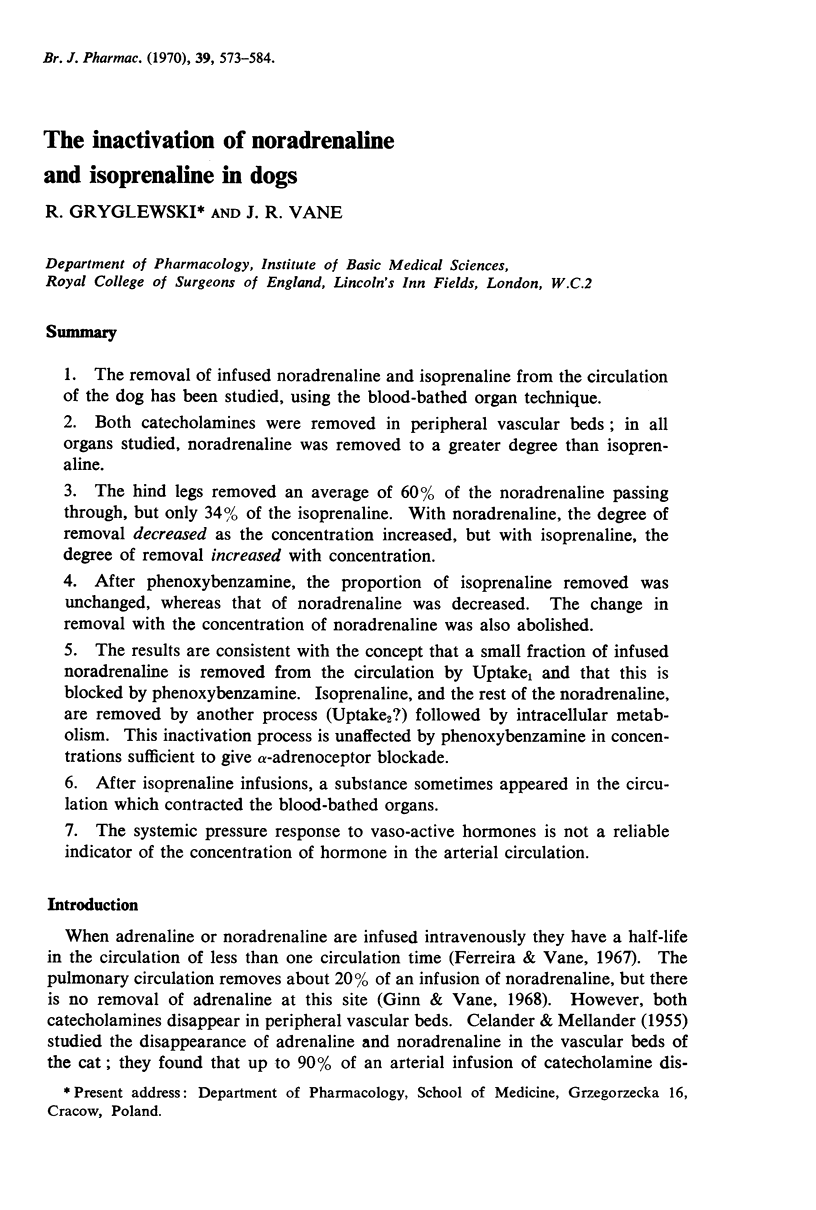
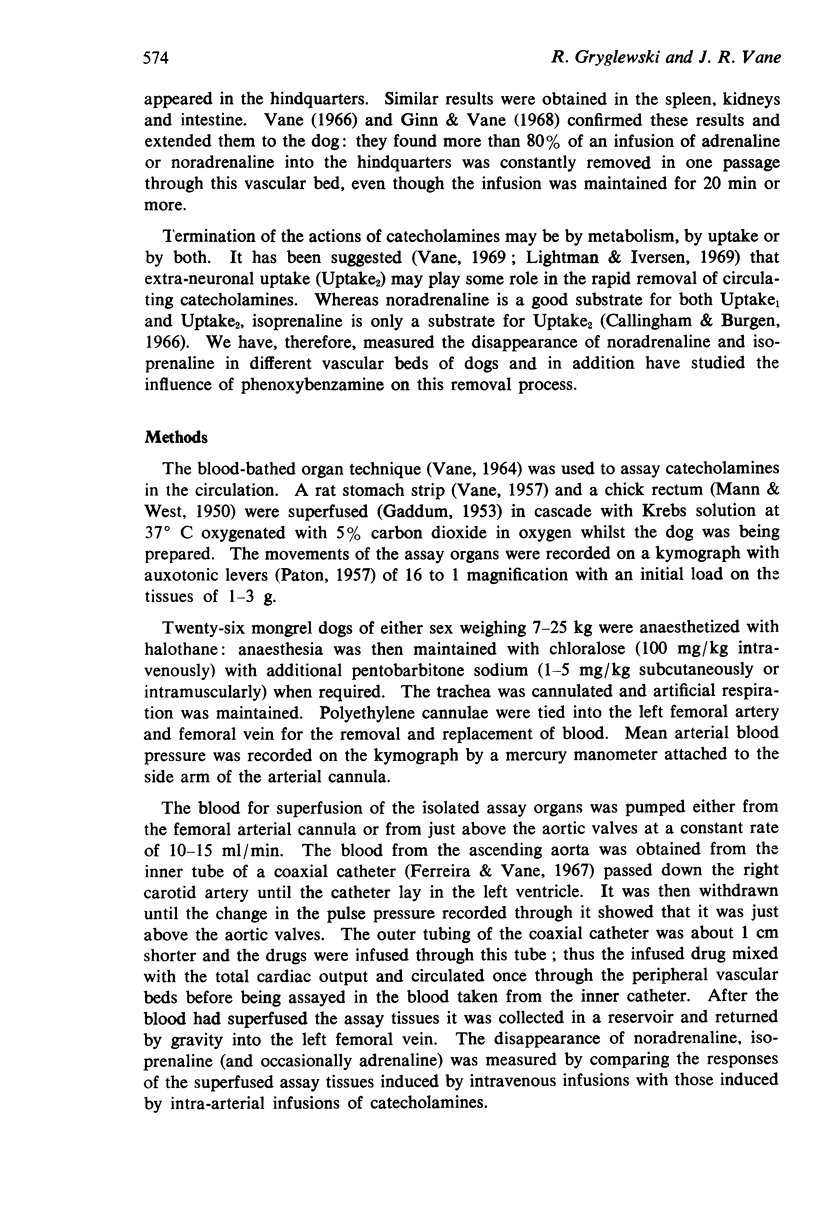
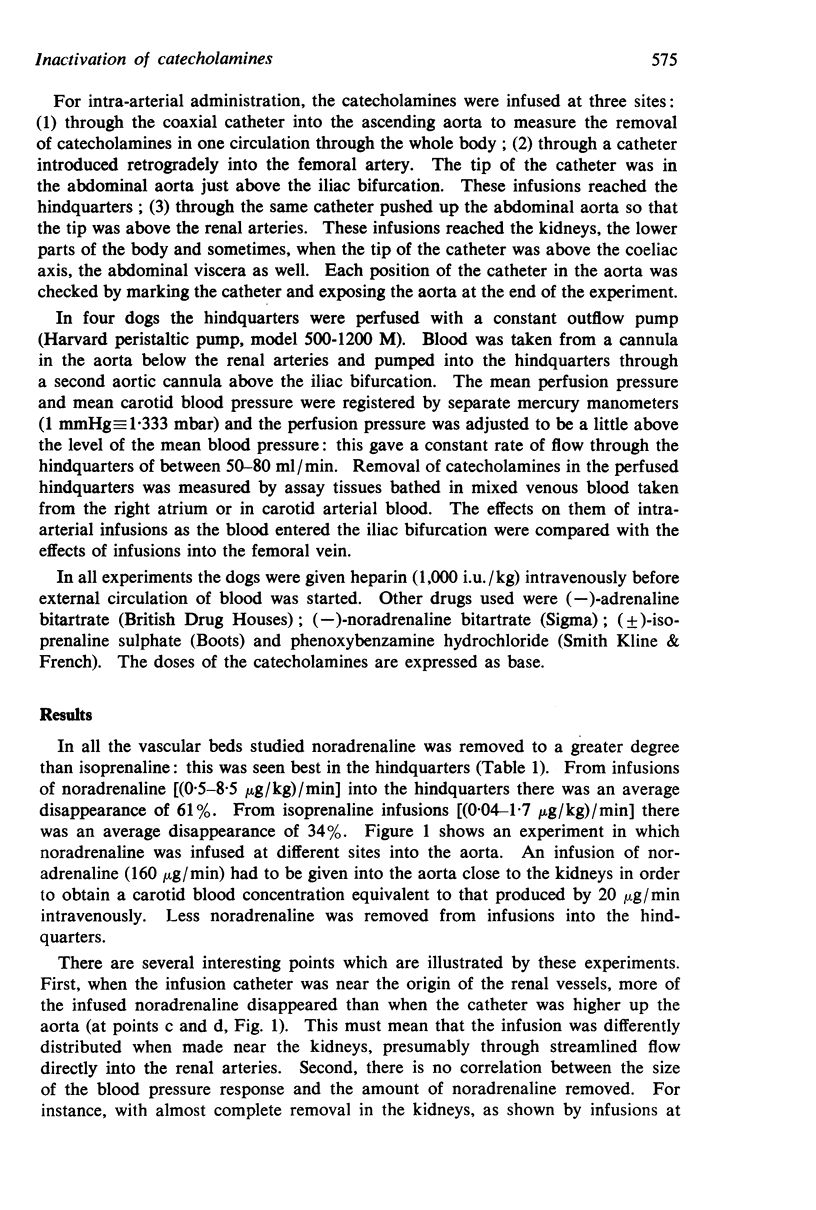

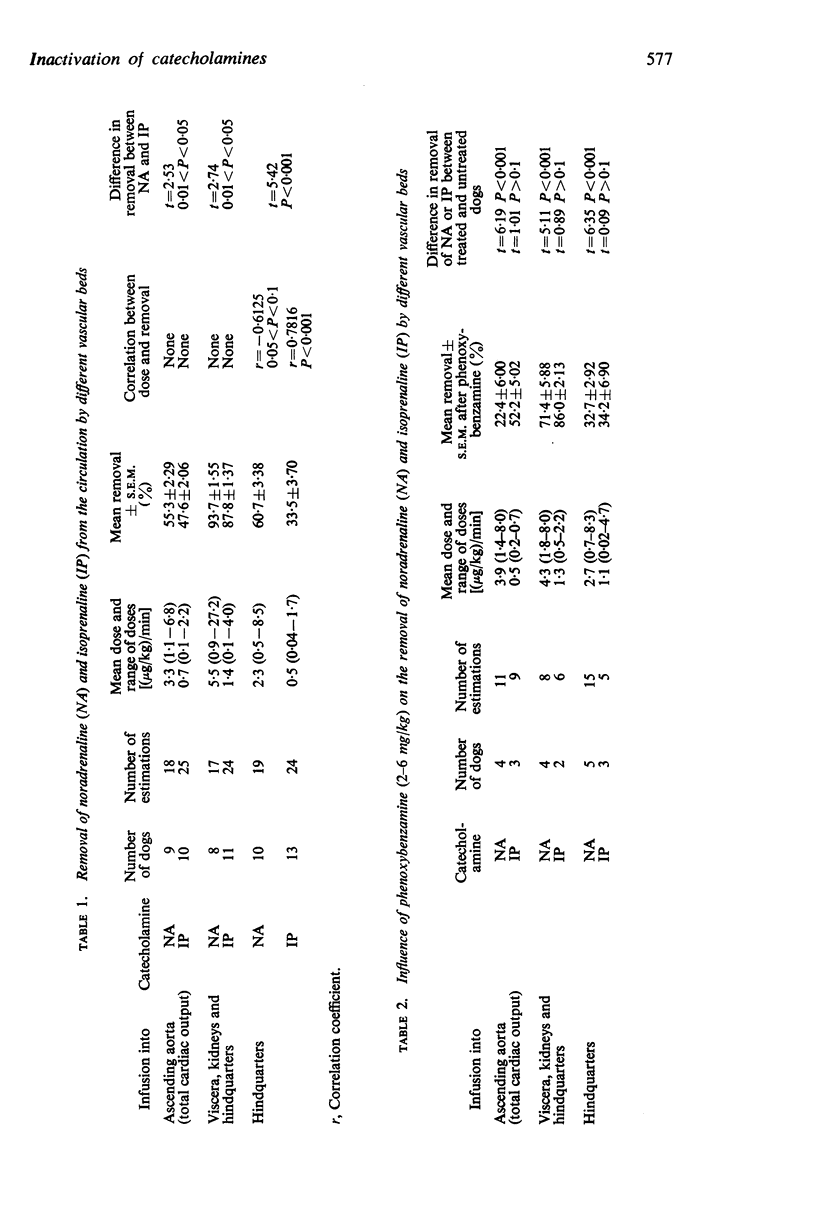
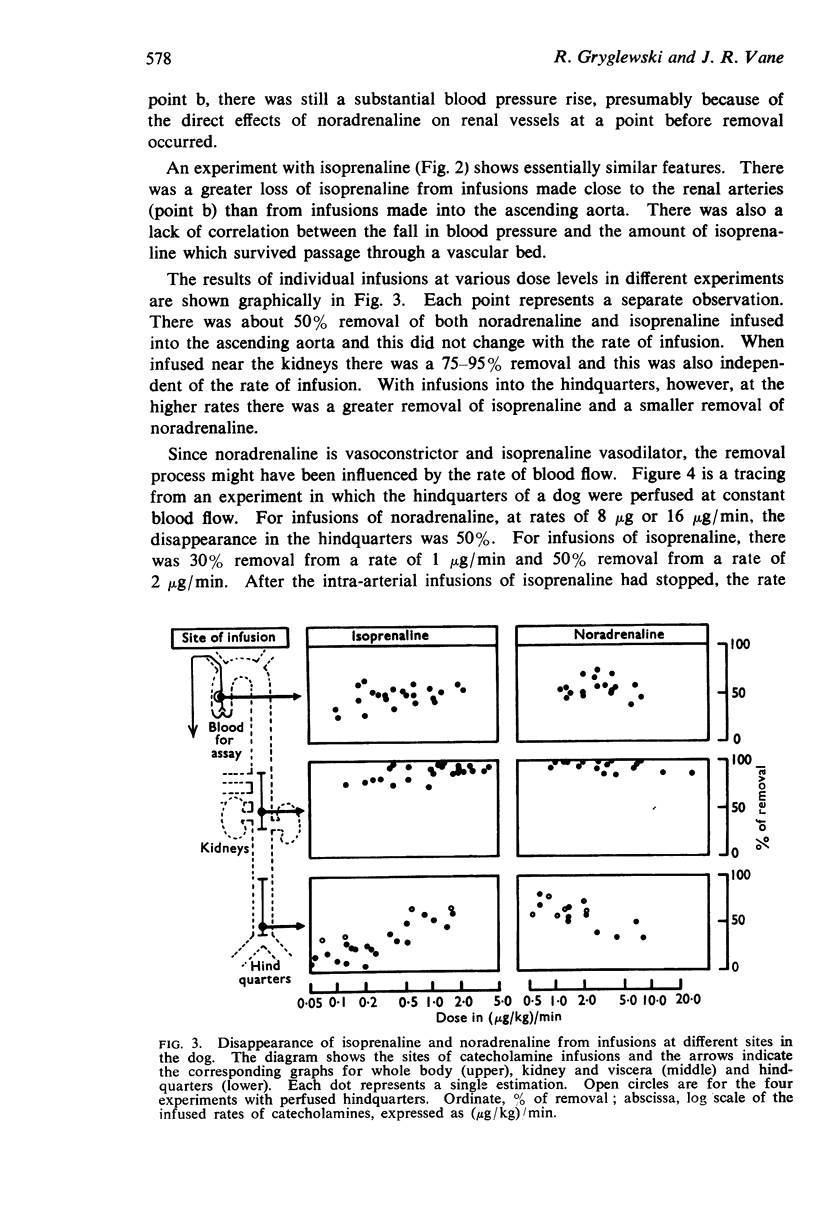
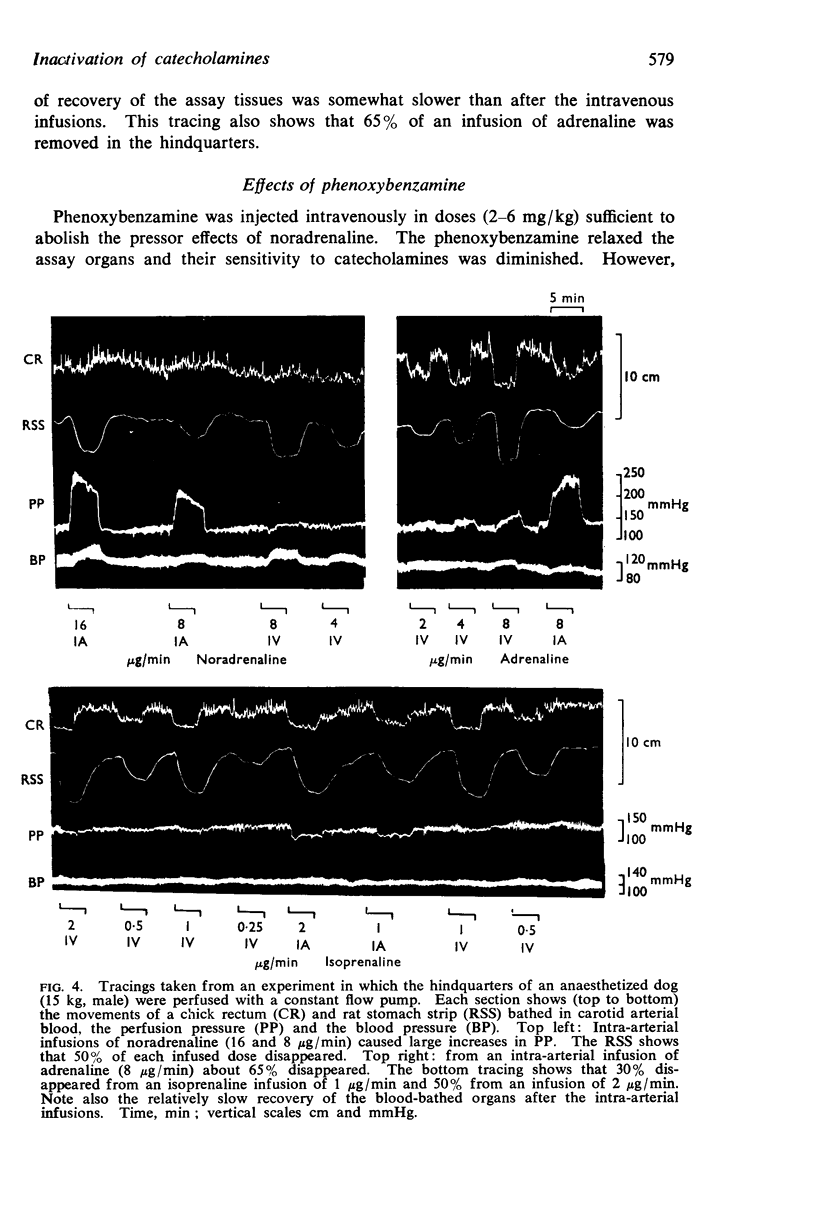
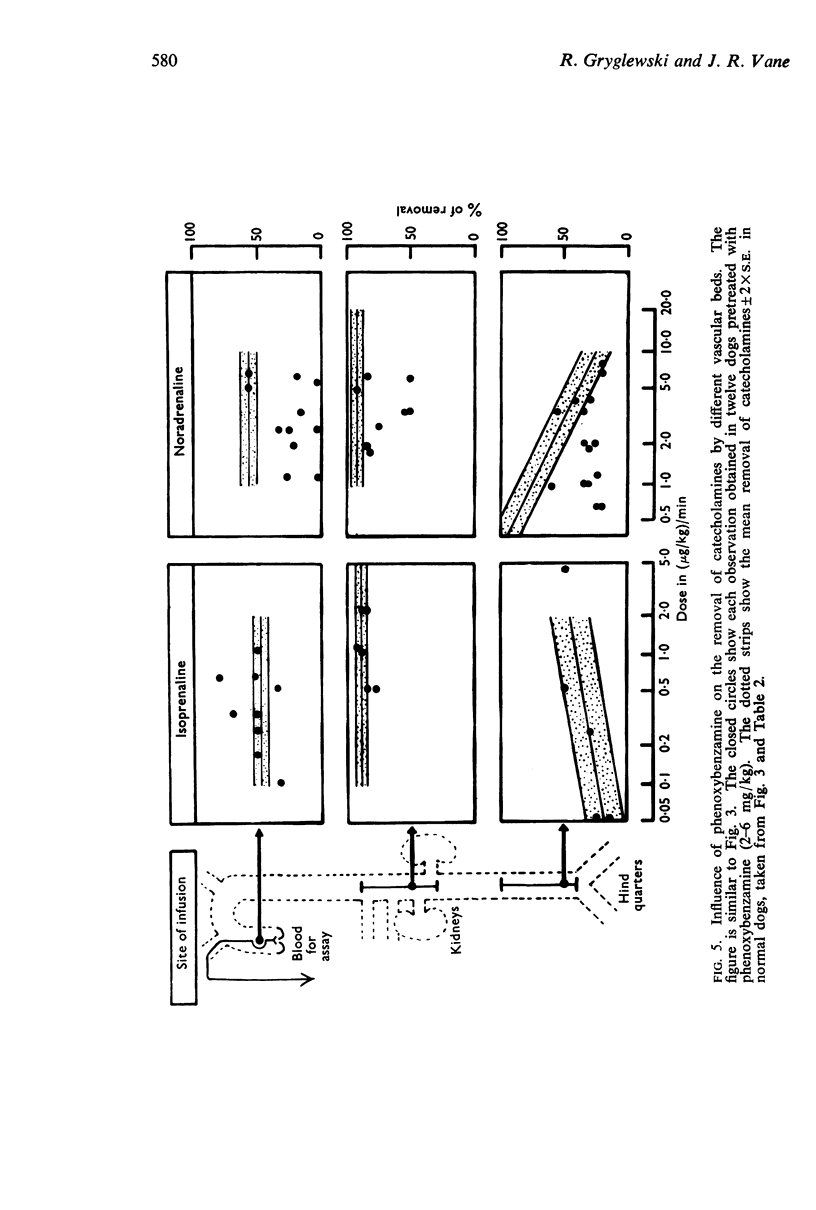

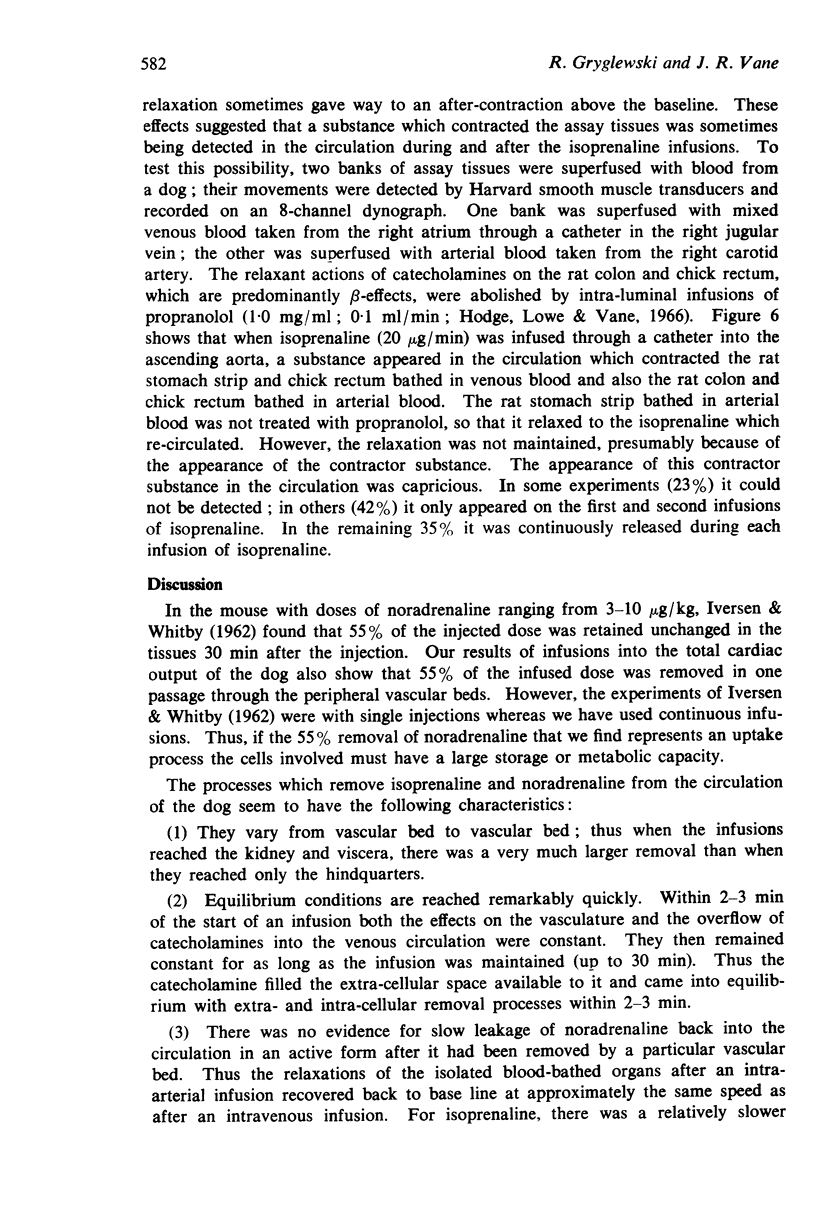
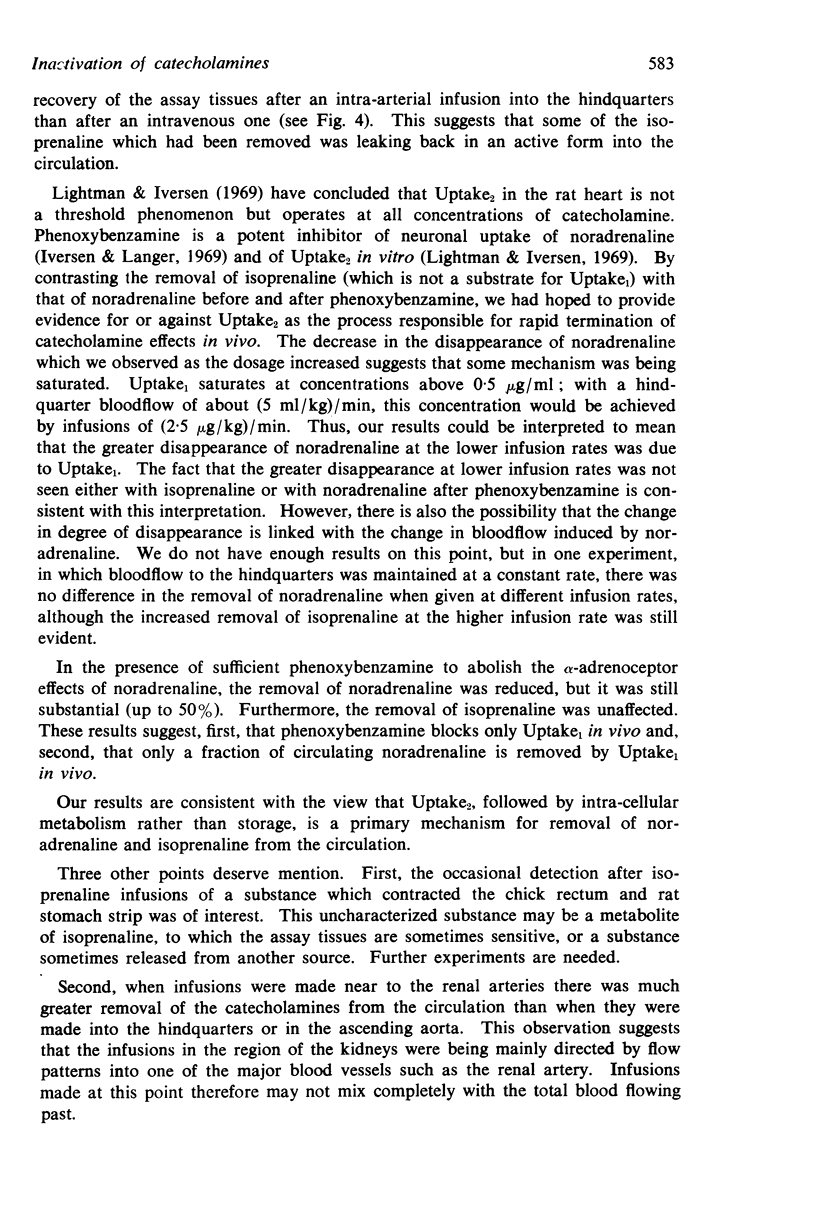
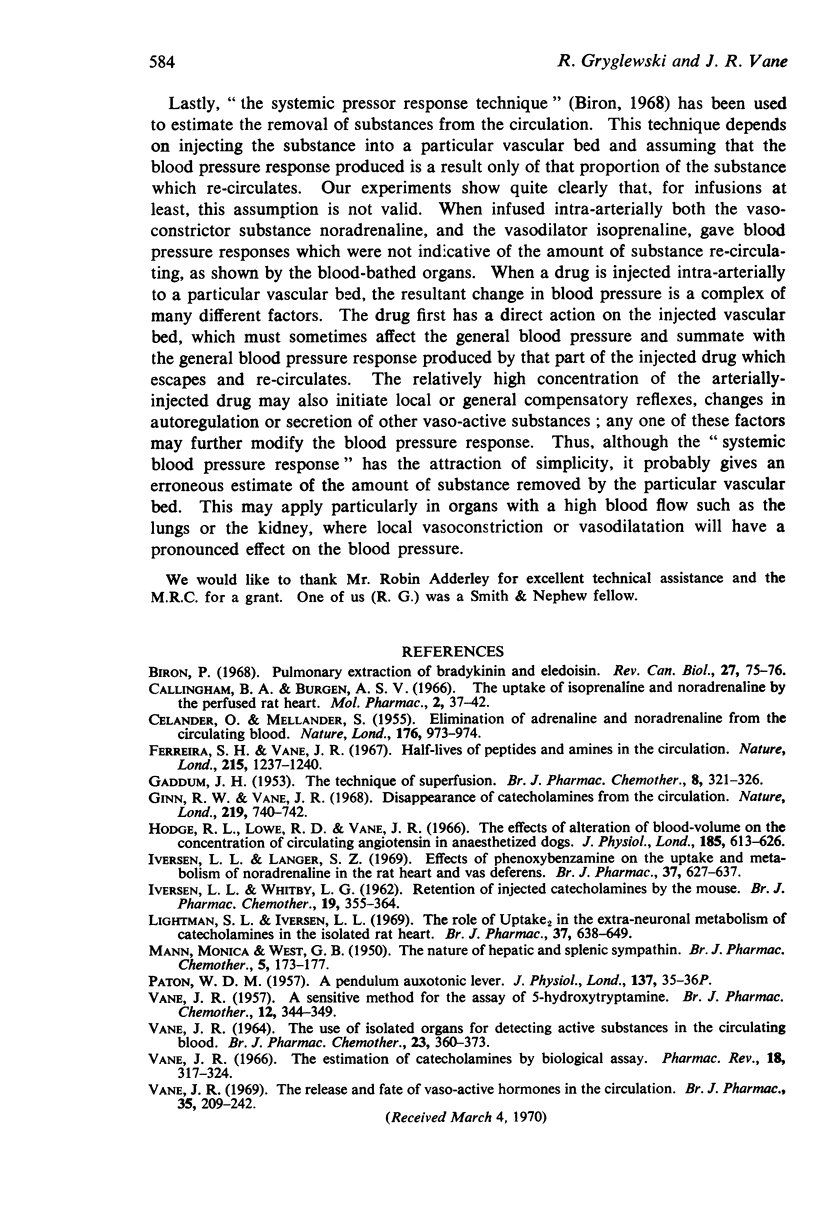
Selected References
These references are in PubMed. This may not be the complete list of references from this article.
- Biron P. Pulmonary extractionof bradykinin and eledoisin. Rev Can Biol. 1968 Mar;27(1):75–76. [PubMed] [Google Scholar]
- CELANDER O., MELLANDER S. Elimination of adrenaline and noradrenaline from the circulating blood. Nature. 1955 Nov 19;176(4490):973–974. doi: 10.1038/176973a0. [DOI] [PubMed] [Google Scholar]
- Callingham B. A., Burgen A. S. The uptake of isoprenaline and noradrenaline by the perfused rat heart. Mol Pharmacol. 1966 Jan;2(1):37–42. [PubMed] [Google Scholar]
- Ferreira S. H., Vane J. R. Half-lives of peptides and amines in the circulation. Nature. 1967 Sep 16;215(5107):1237–1240. doi: 10.1038/2151237a0. [DOI] [PubMed] [Google Scholar]
- GADDUM J. H. The technique of superfusion. Br J Pharmacol Chemother. 1953 Sep;8(3):321–326. doi: 10.1111/j.1476-5381.1953.tb00801.x. [DOI] [PMC free article] [PubMed] [Google Scholar]
- Ginn R., Vane J. R. Disappearance of catecholamines from the circulation. Nature. 1968 Aug 17;219(5155):740–742. doi: 10.1038/219740a0. [DOI] [PubMed] [Google Scholar]
- Hodge R. L., Lowe R. D., Vane J. R. The effects of alteration of blood-volume on the concentration of circulating angiotensin in anaesthetized dogs. J Physiol. 1966 Aug;185(3):613–626. doi: 10.1113/jphysiol.1966.sp008005. [DOI] [PMC free article] [PubMed] [Google Scholar]
- IVERSEN L. L., WHITBY L. G. Retention of injected catechol amines by the mouse. Br J Pharmacol Chemother. 1962 Oct;19:355–364. doi: 10.1111/j.1476-5381.1962.tb01199.x. [DOI] [PMC free article] [PubMed] [Google Scholar]
- Iversen L. L., Langer S. Z. Effects of phenoxybenzamine on the uptake and metabolism of noradrenaline in the rat heart and vas deferens. Br J Pharmacol. 1969 Nov;37(3):627–637. doi: 10.1111/j.1476-5381.1969.tb08501.x. [DOI] [PMC free article] [PubMed] [Google Scholar]
- Lightman S. L., Iversen L. L. The role of uptake2 in the extraneuronal metabolism of catecholamines in the isolated rat heart. Br J Pharmacol. 1969 Nov;37(3):638–649. doi: 10.1111/j.1476-5381.1969.tb08502.x. [DOI] [PMC free article] [PubMed] [Google Scholar]
- MANN M., WEST G. B. The nature of hepatic and splenic sympathin. Br J Pharmacol Chemother. 1950 Jun;5(2):173–177. doi: 10.1111/j.1476-5381.1950.tb01004.x. [DOI] [PMC free article] [PubMed] [Google Scholar]
- VANE J. R. A sensitive method for the assay of 5-hydroxytryptamine. Br J Pharmacol Chemother. 1957 Sep;12(3):344–349. doi: 10.1111/j.1476-5381.1957.tb00146.x. [DOI] [PMC free article] [PubMed] [Google Scholar]
- VANE J. R. THE USE OF ISOLATED ORGANS FOR DETECTING ACTIVE SUBSTANCES IN THE CIRCULATING BLOOD. Br J Pharmacol Chemother. 1964 Oct;23:360–373. doi: 10.1111/j.1476-5381.1964.tb01592.x. [DOI] [PMC free article] [PubMed] [Google Scholar]
- Vane J. R. The estimation of catecholamines by biological assay. Pharmacol Rev. 1966 Mar;18(1):317–324. [PubMed] [Google Scholar]
- Vane J. R. The release and fate of vaso-active hormones in the circulation. Br J Pharmacol. 1969 Feb;35(2):209–242. doi: 10.1111/j.1476-5381.1969.tb07982.x. [DOI] [PMC free article] [PubMed] [Google Scholar]


